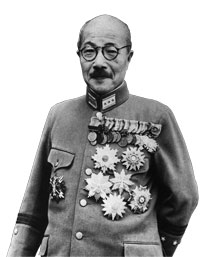Was Japan a Fascist Nation?
America says that the Second World War was a battle between “the fascism (totalitarianism) of Japan, Germany, and Italy,” and “the democracy of the States, England, China and the Soviets.” However, it is obviously wrong that the Soviets and China are democratic. Also, Germany and Italy aside, was Japan really a fascist nation?
So What Exactly Is Fascism?

Adolf Hitler
Italy’s Fascist Party and Germany’s Nazi Party in WWII, represented fascism (totalitarianism). As we know from the Nazi’s official name, “National Socialist German Worker’s Party”, fascism is the blend of “nationalism” where the citizens sacrifice themselves for the nation, and “socialism” where the state rules over the citizens through a state-controlled economy. Typical features of fascism include “invasion of foreign countries”, “racial discrimination”, and “ideological censorship and the existence of concentration camps”.
Such belligerent features can also be seen in many communist nations. It is said that while fascism is nationalism (right wing) that calls for national unity, communism is internationalism (left wing) that calls for a worldwide unity of the working class.
The Soviet communists and the intellectuals who were influenced by them, hated being put in the same category as fascism and differentiated the two. However, communism too has, after all, become nationalistic, and according to the political philosopher Arendt and the economist Hayek, both are “totalitarian”, and essentially the same.
Fascism (totalitarianism) Cuts Off Individual Freedom

Friedrich August von Hayek
Hayek showed clearly that under a state-controlled economy always leads to totalitarianism.
If the state plans and decides on the products’ production volume and price, and placement of supplies and personnel, an enormous amount of power becomes concentrated on bureaucracy. For instance, even a publisher of a large newspaper will not be able to go against the bureaucracy. Moreover, private property that enables one to live freely will come under the control of the state.
To force citizens into such a situation where they will lose their freedom, the state will certainly start censoring and purging, and one will begin to see the rise of secret police and concentration camps. Only by creating enemies within and without through “racism” and an “aggressive ideology”, and ever tightening control, can the system be maintained. Those like Arendt and the scholar of management Drucker understood that “the essence of totalitarianism lies in prohibition and destruction.”
Whether it is fascism or communism, in a totalitarian nation, individual freedoms become cut off.
America Was Actually More Fascist than Japan

Franklin Delano Roosevelt
The criteria for fascism are whether such things as “massacres”, “racial prejudices” or “concentration camps” exist.
So how would one define Japan during that period? The Japanese military’s “evil deeds,” especially the “Nanking Massacre” were fabricated stories that originated after the war (see page 24). Nor did any “concentration camp” exist.
And when it came to racial discrimination, Japan had actually fought against it. After WWI, Japan had actually submitted the “Racial Equality Proposal” at an international conference (dismissed by an American President). Also, in the slogan of “Hakko Ichiu” that Japan held as the ideal during WWII, racial equality was clearly advocated. Japan fought against the racial discrimination of the Caucasian nations that ruled over Asia, even at great risk to its own country.
On the other hand, America “massacred” some tens of thousands of Japanese civilians with the atomic bomb and its air raiding of towns and cities. And though the implementation of such acts as the immigration law, they took away the Japanese-Americans’ citizenship and their property. The also committed “racial discrimination” by moving Japanese to “concentration camps”. It was America, rather than Japan, that was, in fact, mirroring a fascist nation.
Japan Before the War Was a Wartime Regime, Ready to Fight Communism

Hideki Tojo
Certainly, Japan during the war also started rationing, and in the end had a controlled economy, censored talk that was not part of their times, resulting in increased lack of freedom. Considering such points, the left-wing political scientist, Masao Maruyama, treated Japan as a fascist nation. However, any country whose existence is on the line in times of War, cannot help but exhibit certain temporary traits.
Furthermore, that Japan entered the war was based on the fact that the West had instigated an economic blockade, America was practicing racial discrimination, and that it became necessary to protect against the threat of communism and protect the nation. However, that Japan – even in that situation – did not commit “massacres”, “purge” or practice “racial discrimination”, or create “concentration camps”, reveals that it was not a fascist nation.
Japan during the war was fighting against the Soviets and Mainland China’s communist powers, or in other words, against totalitarianism. If we had to categorize Japan at that time, we ought to say that Japan was a “wartime regime that was fighting against communism”. Therefore to criticize Japan as a fascist regime is misguided.
Related
- Germans Lost Diligence After the War : An Interview with Emi Kawaguchi-Mahn : Japan and Germany Must Take Back Their Pride (Part 12)
- Was President Roosevelt Truly a "Hero"? - Japan and Germany Must Take Back Their "Pride" (Part 13)
- Roosevelt Deceived the American Citizens and Congress : Japan and Germany Must Take Back Their "Pride" (Part 14)
- GHQ Completely Occupied the Japanese Spirit : Japan and Germany Must Take Back Their "Pride" (Part 15)
- What Were the Occupational Policies of America? : Japan and Germany Must Take Back Their "Pride" (Part 16)



















